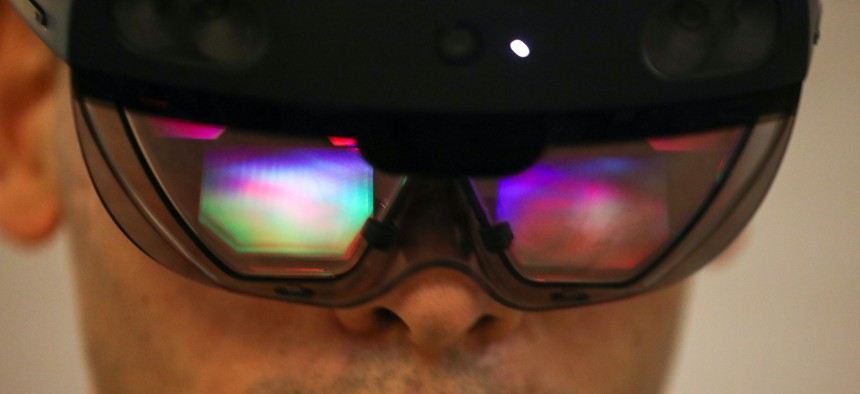LAUREN C. WILLIAMS

The Army wants a small business to supply tech that can support and integrate everything from sensors to 5G and augmented reality headsets, in an effort to “optimize the ground soldier’s ability to shoot, move, and communicate”
The Ground Soldier Technology Workflow, Integration, and eXperience—or GS-TWIX—is an effort to link several technologies through both hardware and software, according to a solicitation notice.
The Army first revealed its intentions earlier this year with a request for information that highlighted six elements, including tech that can optimize sensor data; communications, like with the Nett Warrior program; and other ground-based systems needed for displaying information collected by sensors or other means. Other task elements focus on improving the survivability of these systems if exposed to chemical, biological or nuclear attacks, and the tactical implications of using 5G.
GS-TWIX seems to represent a piece of the Army’s ambition to more intricately connect data to troops and decision makers through improved sensors and networking capabilities. It also specifically calls for integration with the Army’s augmented reality headset, the Integrated Visual Augmentation System, which could indicate longer-term plans as the Army works out the system’s future.
“All applications shall be integrated with the software code base and hardware system for either Nett Warrior or IVAS,” the notice states, adding that the contractor must also supply a technical report on Chemical Biological Radiological and Nuclear Defense integration. IVAS is also mentioned in relation to Ground Soldier Systems Integration and Sensored Soldier.
But a final report on the IVAS’s latest test is still pending—as is a final decision on its future.
Douglas Bush, the Army’s chief buyer, declined to give details on whether the system would be fielded in the coming months, but told reporters last month that there are “still some technology issues with regard to the exact technology in the platform that need further improvement.”
“I think we have a good system, it needs further improvement. There's also, because this is a wearable technology, there are kind of human factors engineering aspects of how it is on a soldier that we again learned what—good and bad—in terms of what they liked and what they didn't like and what was, rather than just using the term liked or didn't like, what was most helpful to them in accomplishing their missions,” Bush said, adding that the service secretary has the final say on whether the system will move forward.
The Army plans to submit the system’s final test reports to Congress by early fall and have a decision on IVAS’s future before then, he said.
Submissions for the proposal are due by Aug. 22.
No comments:
Post a Comment